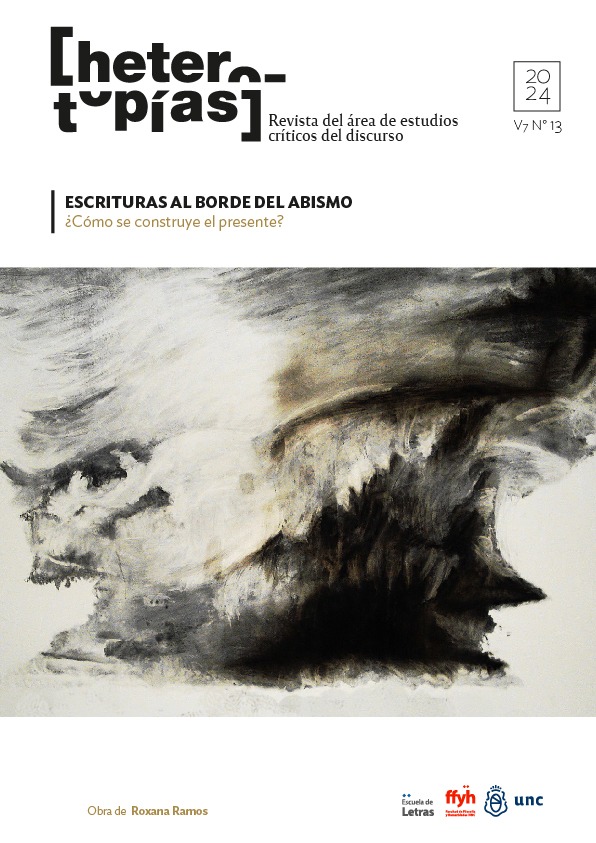Editorial note
Main Article Content
Abstract
The 13th issue of the journal Hetereotopías presents, in addition to its usual sections, a dossier coordinated by Dr. Lucía De Leone and Dr. Nora Domínguez of the Instituto de Investigaciones de Estudios de Género, Facultad de Filosofía y Letras, Universidad de Buenos Aires. The dossier, entitled "Writings on the edge of the abyss: how is the present constructed?", gathers articles that propose a reflection on the personal and collective experiences of traumas, radical anguish, maximum precariousness, imminent catastrophes and extinction that have nurtured with different motifs and forms the obverse and reverse sides of history, accounting for the infinite number of subjective, affective and political variations that constitute the experience of bodies. In the words of the coordinators, our era is marked by the proliferation and lack of hierarchy of writings, by the profusion of styles and proposals, by the multiplication of fictions, and by the questioning of the status and borders of the humanities. In response to this, the dossier proposes a set of personal and collective experiences, always situated and their textual materialities, as part of the gestures of intervention at this juncture.
Downloads
Article Details

This work is licensed under a Creative Commons Attribution-NonCommercial-ShareAlike 4.0 International License.
Those authors who have publications with this journal, accept the following terms: Those authors who have publications with this journal, accept the following terms:
a. The authors will keep their copyright and guarantee to the journal the right of first publication of their work, which will be simultaneously subject to the Creative Commons Attribution - Non-Commercial - Share Alike (by-nc-sa) Attribution License; no commercial use of the original work or any derivative works is allowed, the distribution of which must be done with a license equal to the one that regulates the original work.
b. Authors may adopt other non-exclusive license agreements for the distribution of the published version of the work (e.g., deposit it in an institutional telematic archive or publish it in a monographic volume) provided that the initial publication in this journal is indicated.
c. Authors are allowed and recommended to disseminate their work through the Internet (e.g. in institutional telematic archives or on their website) before and during the submission process, which may lead to interesting exchanges and increase the number of citations of the published work. (See The effect of open access).
